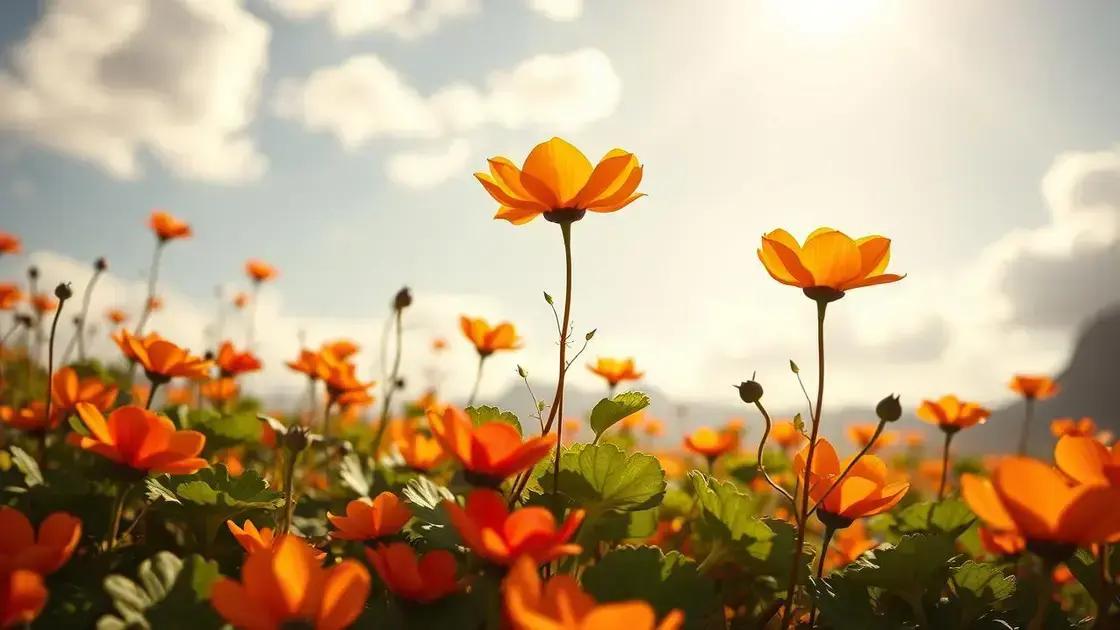How to care for nasturtium plants is a question many garden enthusiasts ponder. These vibrant flowers are not just beautiful; they also serve as meaningful additions to your garden. Discover tips that help these plants flourish and brighten your space.
Table of Contents
ToggleEssential watering techniques for nasturtium plants
How to care for nasturtium plants effectively involves understanding their watering needs. Proper watering techniques can significantly impact the growth and vibrancy of your nasturtium flowers. This guide covers essential strategies to ensure your nasturtiums thrive.
Understanding watering requirements
- Nasturtium plants thrive in well-drained soil that retains some moisture.
- Watering frequency depends on factors like soil type and weather conditions.
- Avoid overwatering, as nasturtiums prefer slightly dry conditions between waterings.
Creating an effective watering schedule
- Check for soil moisture: Stick your finger about an inch into the soil. If it feels dry, it’s time to water.
- Water deeply: Ensure that moisture penetrates the root zone.
- Adjust frequency: During hot summer months, you may need to water more frequently, while cooler climates may require less.
Best practices for watering nasturtium plants
- Water in the early morning to minimize evaporation and fungal diseases.
- Use a soaker hose or drip irrigation for more efficient watering.
- Observe your plants: Wilting leaves may indicate they need water, but yellowing could signal overwatering.
Common questions about nasturtium watering
How often should I water nasturtium plants?
This varies based on environmental conditions but generally, once a week is a good starting point.
What are signs of overwatering in nasturtium plants?
Yellowing leaves, root rot, and wilting even in moist soil indicate potential overwatering issues.
Conclusion
Understanding how to care for nasturtium plants, especially regarding their watering needs, is crucial for achieving vibrant blooms. With proper techniques, your nasturtiums will be the envy of the garden.
Sunlight exposure needs for healthy nasturtium growth

Sunlight exposure needs for healthy nasturtium growth are paramount to ensuring these plants thrive in your garden. Adequate light not only affects their growth but also influences their blooming health. Understanding how to optimize light for pest control and soil enrichment can lead to a flourishing nasturtium garden.
Ideal sunlight conditions for nasturtiums
- Nasturtiums prefer full sun, requiring at least 6 hours of direct sunlight daily.
- Partial shade can be tolerated, but the plants may produce fewer blooms in shadier conditions.
- Avoid overly intense afternoon sun in extremely hot climates to prevent leaf burn.
Observing your nasturtium plants
- Monitor leaf color and growth patterns as indicators of light sufficiency.
- Healthy leaves should be vibrant and not pale or scorched.
- If plants are leggy and stretching towards the light, they may need repositioning.
Common questions about sunlight exposure
Can nasturtiums grow indoors with artificial light?
Yes, they can thrive under grow lights. Exploring indoor gardening techniques can help achieve the right conditions.
What happens if nasturtiums do not get enough sunlight?
Insufficient light can lead to weak plants with reduced flowering and increased susceptibility to pests and diseases.
Conclusion
Understanding the sunlight exposure needs for healthy nasturtium growth is crucial for successful gardening. With proper light, your plants will produce vibrant blooms and thrive.
Fertilizer application tips for vibrant nasturtium blooms
Fertilizer application tips for vibrant nasturtium blooms are essential for ensuring your plants thrive and produce a burst of color in your garden. Understanding the right nutrients and when to apply them can significantly enhance bloom quality.
Choosing the right fertilizer for nasturtiums
- Opt for balanced fertilizers with equal parts nitrogen, phosphorus, and potassium (N-P-K). A ratio like 10-10-10 or 5-10-5 is effective.
- Organic options include compost or well-rotted manure, providing slow-release nutrients without chemical additives.
- Avoid high nitrogen fertilizers, as they promote leaf growth over blooms.
When and how to apply fertilizer
- Start feeding your plants every 4-6 weeks during the growing season.
- Apply fertilizer either in the morning or late afternoon to minimize burn.
- Water your nasturtiums thoroughly before applying fertilizer to prevent root damage.
Common questions about fertilizing nasturtium plants
How do I know if my nasturtiums need fertilizer?
Signs include yellowing leaves or fewer blooms, indicating nutrient deficiency.
Can I use liquid fertilizer on nasturtium plants?
Yes, a balanced liquid fertilizer can be applied every 2-4 weeks for quick nutrient absorption.
Conclusion
Effective fertilizer application is key to vibrant nasturtium blooms. By understanding their nutritional needs and applying the right fertilizers at the right times, you can achieve a flourishing garden.
In conclusion
Caring for nasturtium plants is an enriching experience that requires understanding their specific needs for watering, sunlight, and fertilizer application. By implementing effective watering techniques, ensuring adequate sunlight exposure, and applying the right fertilizers, your nasturtiums can thrive and produce vibrant blooms throughout the growing season. For those interested in growing nasturtiums indoors, consider exploring tips on enhancing your indoor garden to create the perfect environment for your plants.

